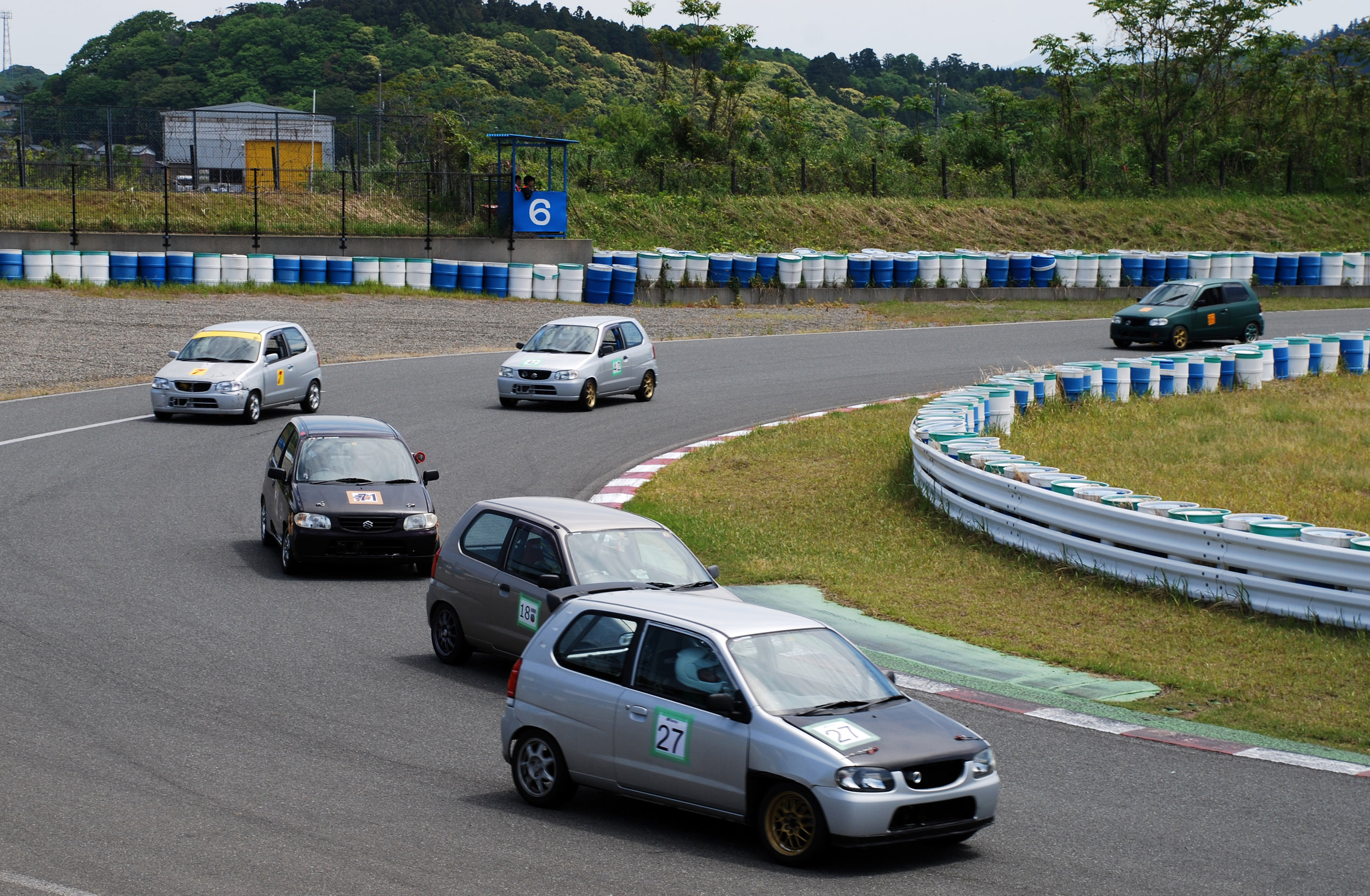[ Alto Works ] Rally Roof Vent, Part 1
There really is nothing glamorous about driving on a track on a hot day with the air conditioner off, baking in a double-layered, Nomex, fire-retardant suit under a bright midday sun. Depending on rules at the track, some require the window(s) to be up, possibly to prevent the driver’s extremities from flying out of the car in a crash. (For example, at Takasu Circuit in Fukui, the driver’s side window has to be fully up, although the passenger-side window can be left down.) This only makes things hotter and just… terrible.
Obviously running air conditioning would be nice, but when you’re chasing the last tenth-of-a-second for lap times, the approximate 5 HP drain from a compressor is not ideal. Proper race cars, in a bid to lighten the last ounce of weight, remove the whole heavy air conditioning assembly, saving potentially 15-20 kg (30+ pounds).
This forces drivers to get creative with airflow through the car to cool down. As with the aforementioned track day, many cars had air duct piping directed toward the driver.
Rally cars also often adhere to windows-up safety rules, often forcing them to use bulky “cool suits” that pipe-in ice water and roof ventilation which rams air down toward the driver (and passenger).
I think roof vents would be a cool addition to my project car, allowing me to keep cooler and flow additional air through the cabin. I know my car isn’t a “rally car,” but this would be especially useful during the spring and fall months, when the weather is just cool enough to not run AC, but hot enough that windows down just doesn’t provide enough cooling.
However, there is a huge potential drawback to a roof vent: shaken. As the biannual inspection is quite strict, they may not allow such an aftermarket modification to be made, citing some arbitrary safety or height guidelines. And the fact that cutting a huge hole in my roof could lead to rust and cabin leaks during the frequent rainstorms in Japan. That is, if I don’t install it correctly.
Overview
Roof vents can be simple panels that open when needed to huge, fixed FRP scoops that have elaborate water channels to prevent rain leakage into the cabin. Probably the most common one I’ve found over the years is the Subaru STI Spec C roof vent that some street drivers install on their own Imprezas to give their cars a cool rally look. Honestly, it is pretty nice looking and when installed, like it came straight from the factory with the underside finish panel. Not to mention when closed, it is barely noticable.
Looking around online, I sadly could not find this piece for under 30,000¥ ($300 USD) and the new units are about $500. There is no way I could justify spending that much on an albeit slick vent. I scoured the internet over for cheaper alternatives, some being cheap, repurposed Chinese stick-on “hood scoops,” to $800 OEM rally-spec Evo scoops.
Throughout the wide variety of “rally vents” on the market, I finally came across a vent from Australia, a PMD Race Products alloy vent. The price was fair and looked pretty good. I was close to ordering it when I came across some forums which used repurposed vents from RVs.
This is the one I found off Mill Supply. Cheap, simple, but the biggest reason I chose this over the aforementioned vent was this could two-way open and closing… as it could be used both as a ram air intake and cabin exhaust flow, not to mention that it could be opened or closed incrementally, so it needn’t always be fully open or closed. Other forum users have used this with good experience… so I figured I’d give it a try as well.
I placed an order for it when I was visiting stateside and brought it back with me from Japan. In my haste to get it ready, I didn’t take a photo of the bare aluminum finish before painting. As I wanted the finish to be somewhat stealth when closed, I only painted the top panel that would be exposed to the outside, leaving the flange of aluminum bare for proper silicon sealing when installing later.
After an agonizing few weeks waiting for some free project time, I finally found a 3-day weekend where I was free from work-related duties or other obligations. Time to get cutting!






